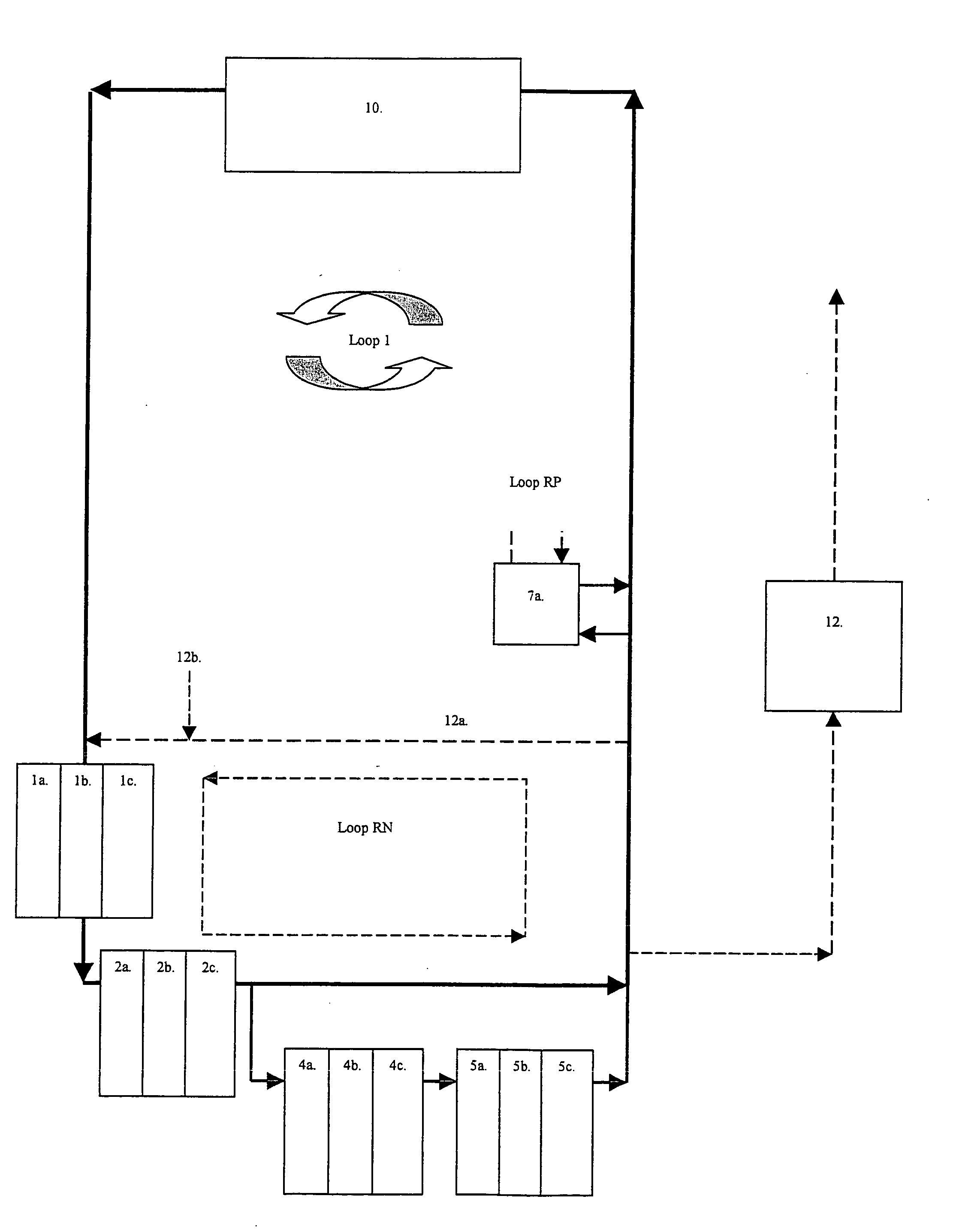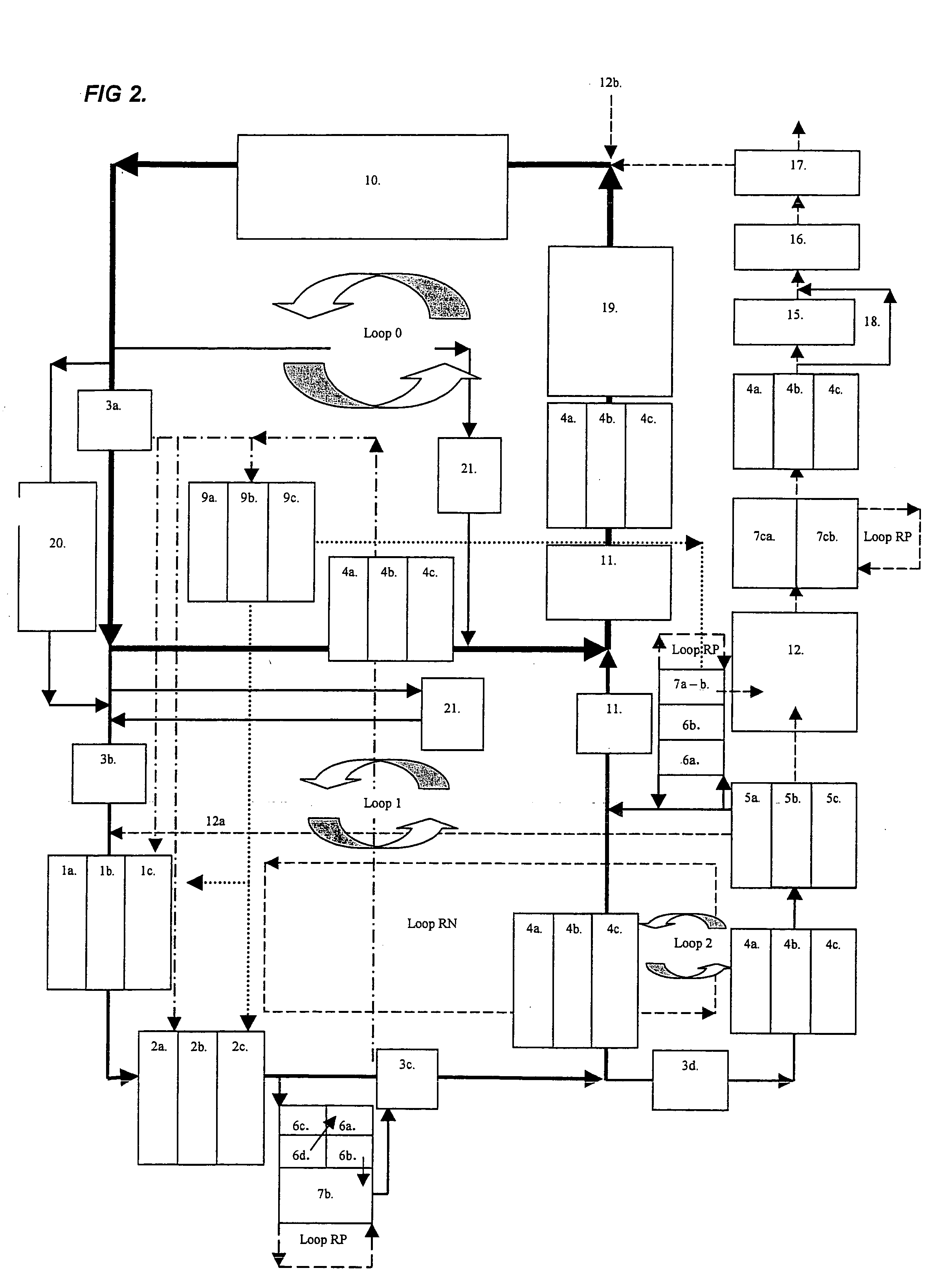The release of nitrogen and phosphorous compounds into the environment has become one of the most pressing environmental hazards.
However, they are released in large quantities especially in industrial, domesticated farm,
aquaculture or
forestry agriculture areas and cause
eutrophication of water recipients, first producing algal blooms and thereafter
oxygen deficiency in natural waters.
Stringent requirements on the
processing of biologically produced nutrients and materials are one of the limiting constraints for the establishment of new industrial,
food processing, agro- and aquaculture ventures.
However,
activated sludge is difficult to control (as in high intensive aquaculture systems with high rates of recirculation and
water flow), due to a necessary aggregation into flocs with a subsequent floatation or
sedimentation, which are all difficult to control.
It puts requirements on large
sedimentation or flotation tanks, which in turn lowers the
cost efficiency (U.S. Pat. No. 3,849,303, U.S. Pat. No. 5,611,927).
This means that the microorganisms are subjected to different forms of stress that will lead to loss of growth yield and efficiency of the filters or reactors, due to constraints of metabolic reversals in each cycle and interspecies competition.
Fixed bed reactors for purification as well as any reactor where most of the active
biomass Is attached as a biological film on an immobilized media, are subject to problems with clogging and requirement of back flushing of the
filter media (U.S. Pat. No. 5,081,954).
Furthermore, the uniform distribution of nutrients,
oxygen, and carbon through the filter is very difficult to control in
fixed bed reactors, where a uniform distribution is actually a prerequisite for an effective process.
Numerous examples on patents disclose solutions for an even distribution of
water flow in a
fixed bed filter, but in practice, it is impossible to fully control the even distribution of
bacteria, substrate and
electron acceptors as oxygen or
nitrate in the media.
More importantly, these constraints impair the means of reliable industrial control and optimisation.
However, the energy input in these systems is relatively high since they are driven by high-pressure pumps, whereby
cost efficiency is lost compared to low head systems, although
high pressure systems require
small footprint area relative to the internal specific
filtration area.
However, hydraulic limitations of each subprocess in the loop limit the recycle and therefore limit the maximum
nitrogen removal.
In a closed loop system, where only a small part of the water is exchanged with the surrounding environment, the oxidation of
organic matter before the
denitrification process, like in conventional systems and patent disclosures (WO 96 / 04784), poses a reduction In the efficiency of biological
water treatment, because available organic material that is desirable for the denitrification is lost in the initial
oxidation process.
It is the sequence of the biological treatment processes relative to the production unit and the inflexibility of the chosen structures that are the major limitations in disclosures for water purification.
Further, the
hydraulic load on the entire treatment process will be unnecessarily high.
In another embodiment in the same patent, where the sequence could be argued to be correct (first a
denitrification process with a by-pass, followed by a carbon filter and nitrification) the inflexibility of not having a by-pass over the nitrification process will imply a very inefficient use of the nitrification reactor If the
nitrite levels are not to become dangerously high to many
aquatic organisms.
Further, the nitrification process is pursued in a 4″ gravel
bed that has the obvious large
footprint disadvantage when run in high intensive systems.
The greatest challenge of all in biological water purification processes is developing environments for high efficiency of the nitrification process, which is far more sensitive than denitrification and BOD-removal.
Inefficient nitrification leads to the production of
nitrite, which may be a great
hazard in agro- / industrial processes and especially if marine or freshwater animals are produced within the industrial system.
One of the most limiting factors is the need for oxygen for nitrification.
High flow rates of water through nitrification reactor usually mean incomplete nitrification.
This is especially true in systems where high flow rates of water are applied and
ammonia levels exceeding 4mg / l As a result toxic nitrite is accumulated in the system.
Thus in most cases either oxygen concentration or
ammonia concentration is-too low, or BOD content or
water flow is too high.
They all result in incomplete nitrification.
But still, water flow leading to the nitrification reactor will contain high amounts of organic material that will hamper nitrification, since no BOD-oxidising reactors are positioned in-between these two processes.
Naturally, it should be considered a bad management practice to mix non-
purified water with newly purified.
The
sludge is always more difficult to control than
biofilm processes on suspended carriers, especially in combination with aerobic anaerobic processes.
Thus, such a system is not efficient for the water purification itself without extensive additional water purification, unless of course the cultured plants are the main production objective and the other industrial production units are regarded as by-products (e.g. fish).
This is not easily obtained with
activated sludge or high-pressure systems (U.S. Pat. No. 4,948,510).
Furthermore, high-pressure systems also require above average capital investments.
 Login to View More
Login to View More 


